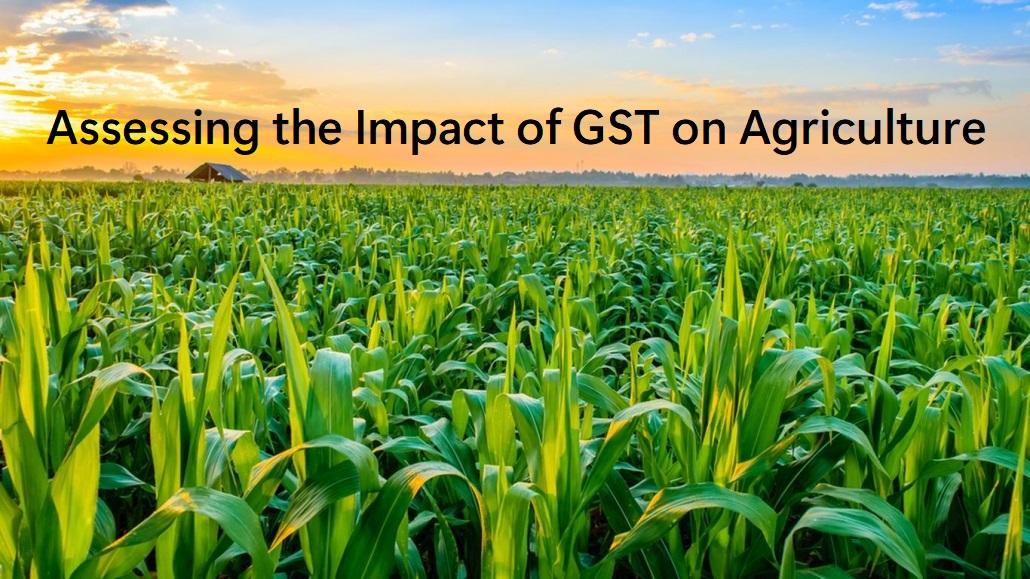Agriculture has been the backbone of the Indian economy for centuries. It is one of the largest and most important sectors of the economy, employing over 50% of the workforce and contributing significantly to the country’s GDP. The importance of agriculture in the Indian economy can be attributed to several factors.
Agriculture provides food security to the country. With a population of over 1.3 billion, India is one of the world’s largest consumers of food. Agriculture, therefore, plays a critical role in meeting the food demands of the growing population.
It contributes significantly to the country’s exports. India is one of the largest exporters of agricultural products in the world, including rice, wheat, spices, tea, and cotton. The export of these products generates significant revenue for the country and helps to boost the economy.

Agriculture has a multiplier effect on the economy. The growth of agriculture leads to the growth of other sectors of the economy, such as manufacturing and services. For example, the growth of agriculture increases the demand for farm inputs such as seeds, fertilizers, and machinery, which in turn stimulates the growth of the manufacturing sector.
The National Agriculture Market (NAM)
NAM is a pan-India electronic trading portal that was launched in 2016. The NAM was created with the aim of connecting various agricultural markets and mandis across the country through an online platform, thereby creating a unified national market for agricultural produce. The NAM seeks to promote transparency, efficiency, and fair pricing in the agriculture sector.
From the GST point of view, the NAM has had a significant impact on the agriculture sector. The implementation of the GST has led to the integration of various state-level taxes and has created a unified tax structure across the country. The NAM has been designed to be compatible with the GST, and it has played an important role in facilitating the implementation of the GST in the agriculture sector.
The NAM has enabled farmers to sell their produce directly to buyers, bypassing intermediaries and middlemen. This has helped to eliminate the complex web of taxes that existed earlier, and has made the taxation process more transparent and efficient. The implementation of the GST has also helped to streamline the taxation process by eliminating multiple taxes and introducing a single tax system.
One of the key features of the NAM is the provision of an electronic auction system, which allows buyers to bid for agricultural produce online. This has helped to create a competitive market for agricultural produce, thereby ensuring fair prices for farmers. The electronic auction system has also helped to reduce the cost of transaction for buyers and sellers, as it eliminates the need for physical transportation of goods.
Another important feature of the NAM is the provision of real-time information on prices and demand for agricultural produce. This has helped farmers to make informed decisions regarding the pricing and sale of their produce. The implementation of the GST has also led to the introduction of an e-way bill system, which has made it easier for farmers to transport their produce from one place to another.
The National Agricultural Market has played a critical role in promoting transparency, efficiency, and fair pricing in the agriculture sector in India. From the GST point of view, the NAM has facilitated the implementation of the GST in the agriculture sector, and has helped to create a unified national market for agricultural produce. The NAM has also helped to eliminate intermediaries and middlemen, thereby ensuring fair prices for farmers and reducing transaction costs for buyers and sellers.
Impact of GST on agriculture sector
One of the primary concerns for the agriculture sector has been the impact of the GST on the prices of agricultural inputs, such as fertilizers, seeds, and pesticides. While these items are exempt from GST, the tax on inputs such as tractors and irrigation equipment has increased from 5% to 12%, making them more expensive for farmers. This has led to concerns about the impact of the increased cost of inputs on the profitability of farming, especially for small and marginal farmers.
Another issue is the GST on farm machinery rentals. Prior to the implementation of GST, agricultural machinery rentals were exempt from tax. However, post-GST, the tax on such rentals has been fixed at 5%. This has led to an increase in the cost of renting farm machinery, which has affected the small and marginal farmers who cannot afford to buy machinery.
On the other hand, the GST has brought some positive changes for the agriculture sector. The GST has brought transparency in the tax system, which has helped to eliminate the complex web of taxes that existed earlier. The GST has also led to the development of the e-way bill system, which has made it easier for farmers to transport their produce from one place to another. This has helped to reduce the wastage of agricultural produce due to delays in transportation.
In conclusion, the GST has had a mixed impact on the agriculture sector in India. While it has brought transparency and simplification in the tax system, the increased tax on inputs and machinery rentals has led to concerns about the profitability of farming. It is essential for the government to address these concerns and provide the necessary support to the agriculture sector to ensure its growth and development in the long run.
Here are some frequently asked questions (FAQs) related to the impact of GST on agriculture, along with their answers:
- What is GST, and how does it impact agriculture in India?
Goods and Services Tax (GST) is a value-added tax that replaced various indirect taxes in India. GST has a significant impact on agriculture in India as it covers the entire supply chain of agricultural products, from the point of production to consumption.
- What are the GST rates applicable to agriculture products and services?
Most agricultural products and services are exempted from GST, including fresh fruits and vegetables, unprocessed cereals, animal feed, and services related to agriculture, such as harvesting, threshing, and storage.
- How has GST affected the pricing of agricultural products?
The impact of GST on the pricing of agricultural products is mixed. Some products have become cheaper due to lower GST rates, while others have become more expensive due to higher GST rates.
4. How has the implementation of GST affected the transportation and logistics of agricultural products?
The implementation of GST has streamlined the transportation and logistics of agricultural products by eliminating the multiple taxes that were previously levied at different stages of the supply chain. This has reduced the transportation time and costs for agricultural products.






